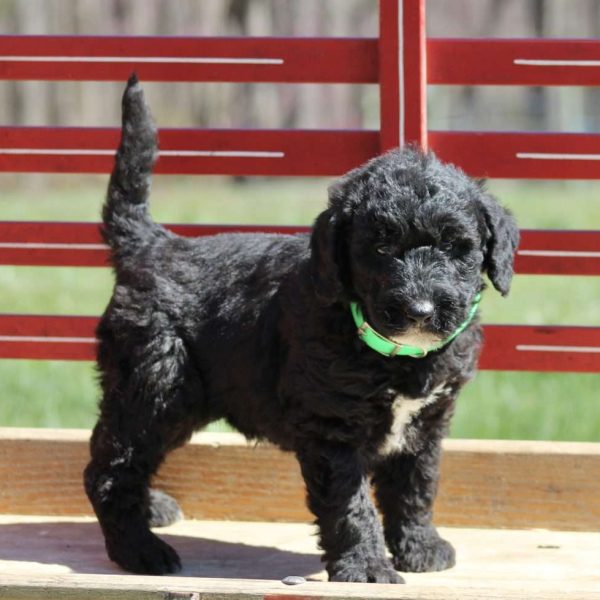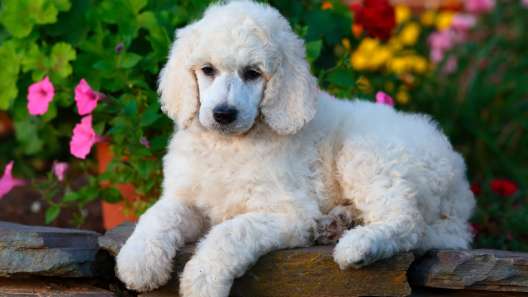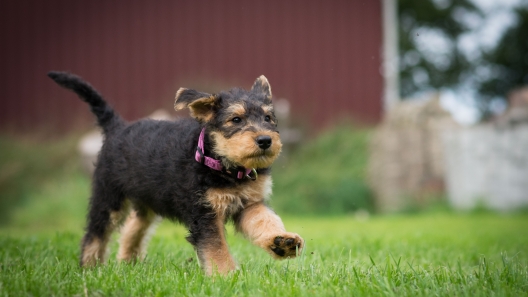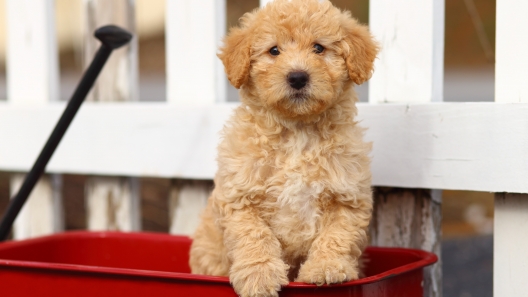
-
Activity Level:
high
-
Shedding Level:
low
-
Grooming Level:
high
-
Trainability:
high
-
Good for Novice Owners:
moderate
-
Adaptability:
moderate
-
Kid/Pet Friendly:
often
-
Prey Drive:
high
-
Watchdog:
very alert
- Average Size: Medium
- Average Lifespan: 10-15 years
- Registered?: other
Airedoodle Dog Breed Information
Overview
Temperament
Adaptability
Health
Owner Experience
Grooming
Activity Level
Size
Life Span
Did You Know?
The Airedoodle is a designer mixed dog breed that is a cross between an Airedale Terrier and a Standard Poodle. The Airedoodle is meant to inherit the best characteristics of both the parent breeds, but they could have any combination of characteristics from either or both of the parent breeds.
Airedoodles tend to be friendly, intelligent, loyal, and energetic dogs with big personalities. Because the Airedoodle is a mixed dog breed, they are not recognized by the American Kennel Club. However, they are recognized by other dog organizations and registries, like the American Canine Hybrid Club, Designer Breed Registry, and more.
With any mixed dog breed, the puppies can inherit any combination of traits from the parent breeds. Airedoodles tend to be intelligent, friendly, and filled with personality. They tend to get along well with children as well as other dogs and sometimes other pets.
They can have a stubborn streak and may have a high prey drive, but early socialization and training can help curb these tendencies. Overall, Airedoodles tend to make excellent family pets and watchdogs. Because they tend to bark to alert you, they can be prone to barking a lot. It’s not a bad idea to train your dog to stop barking early on to keep it to manageable alert barking.
Airedoodles are larger-sized dogs with a high energy level, which makes them a moderately adaptable dog breed. Because of this, they are best suited to larger homes with fenced-in yards where they can run. They generally aren’t a good fit for apartment living, but they can adapt as long as they are given plenty of exercise, mental stimulation, and attention every day.
They do well in most climates, but, as with many dog breeds, are sensitive to extreme heat or cold. Although they can have an independent streak if they take more after their Airedale Terrier parent, they still thrive on being with their families. They are also highly intelligent and can be easily bored, so they do not like to be left alone for long periods of time.
Although mixed dog breeds can sometimes “win the genetic lottery” and inherit no potential health conditions from their parent breeds, they can also inherit the conditions prevalent in one or both of the parent breeds. For the Airedoodle, potential health conditions to be aware of can include skin issues, hip dysplasia, elbow dysplasia, cataracts, and von Willebrand’s Disease.
Good breeding practices and the health of the parents make a big difference in the health of Airedoodle puppies. Reputable breeders will screen their dogs to make sure they are not passing preventable issues to puppies. Don’t be afraid to ask the breeder about the health and genetic history of both parents and about any health clearances or tests that have been done.
As a barrel-chested dog, the Airedoodle is also at a higher risk of bloat. Bloat in dogs can be dangerous and quickly becomes fatal if the stomach flips (i.e., gastric torsion occurs). It’s important to know how to reduce the risk and what symptoms mean that it’s time to get to the emergency vet.
Both of the Airedoodle parent breeds are highly intelligent. This means they tend to pick up on training quickly. If an Airedoodle takes after its Poodle parent, they will be highly trainable and a good fit for owners of any experience level, including first-time dog owners.
If an Airedoodle takes after its Airedale Terrier parent, they can have a stubborn streak that may be an obstacle for first-time dog owners. Puppy training classes are recommended for novice dog owners to ensure training is effective and consistent. It’s also important to keep training positive and focused on praise and rewards.
The Airedoodle is likely to have a low-shedding coat as both of its parent breeds have low-shedding coats. They tend to have a wiry and wavy dog coat type that can be a variety of colors, ranging from the typical Airedale Terrier black-and-tan to any of the Poodle coat colors. Daily brushing to remove tangles and professional grooming every 6-8 weeks are recommended to care for this dog’s coat. In addition to coat care, you will also need to care for your Airedoodle’s nails, ears, and teeth. Professional grooming can help you take care of some of this, but you will need to take care of these grooming tasks as needed between professional grooming sessions.
Nails that are too long can make movement painful, are more likely to split and crack, and increase the risk of getting caught on things. Generally, once or twice monthly nail trimming is sufficient to keep your dog’s nails from getting too long. If your dog’s nails are not wearing down enough naturally between nail trims, then you may need to trim or file them more often.
It’s also important to regularly check and carefully clean your dog’s ears to help prevent ear infections. Too much wax buildup, moisture, dirt, or debris in your dog’s ears can cause damage and potentially infection. By checking your dog’s ears to ensure they are dry, clean, and free of debris, you can help keep them clean and also identify potential issues early in case something is going on.
Dental care for dogs is another essential grooming task. Unfortunately, it is also often overlooked, which is why dental disease is one of the most common health issues in dogs. Just as you need to brush your teeth every day, the same is true for your dog. Using an enzyme toothpaste or brushing your dog’s teeth with a toothpaste formulated for dogs every day is ideal, in addition to cleanings at the vet when needed. This helps prevent the tartar buildup that leads to dental diseases, like gum disease, tooth decay, or tooth loss. You can also talk to your vet about ways to supplement your dental care efforts, such as using dental hygiene chews or feeding your dog a specially formulated “dental care diet”.
Both of the Airedoodle’s parent breeds are high-energy dogs, so you should expect your Airedoodle to require a lot of activity as well. Daily walks, plus some time to run and play, in addition to extra activities, are usually sufficient for this dog.
They’re also happy to be able to be active while spending time with you, so they will likely be up for more activity if you are. They are athletic and versatile dogs that may enjoy taking trips to the dog park, hiking with you, swimming with you, or even training to compete in dog sports.
Just make sure to keep activities low-impact until puppies finish growing to avoid damaging developing bones and joints. For larger dogs, it can take 2-3 years for their bones to fully finish developing. Your vet can help you determine what timeline and activities make sense for your dog.
A fully-grown Airedoodle usually stands 22-26 inches tall at the shoulder and weighs 40-60 pounds.
An Airedoodle generally lives for 10-15 years on average.
This hybrid dog breed is most commonly called an Airedoodle, but it is sometimes also referred to as an Airedalepoo or an Airedalepoop.









